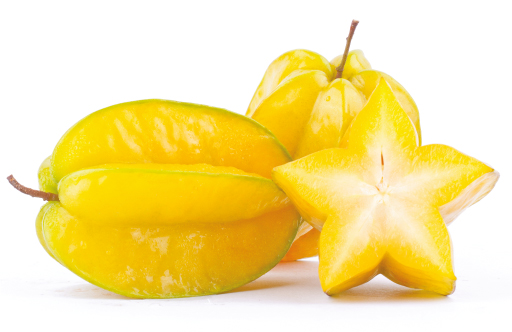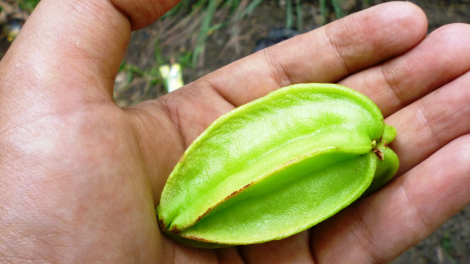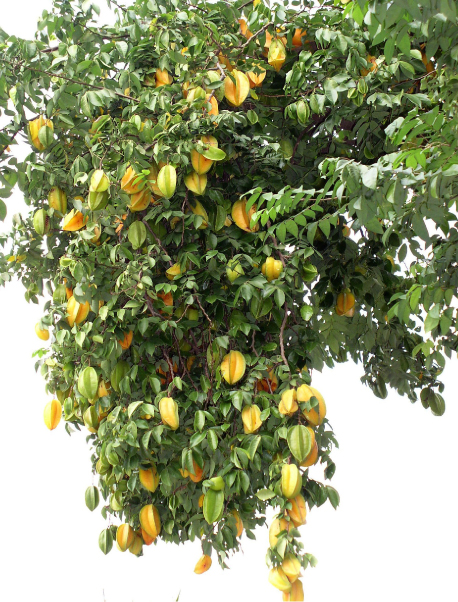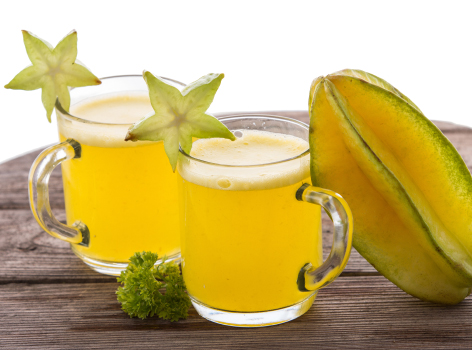
|
DESCRIPTION OF THE FRUIT
It has an oval shape, of 8 to 12 cm by 5 to 6 cm, with a yellow to orange color. When cut, it has a star-shaped cross section. This feature has made it very popular in the decoration of cocktails and desserts. It has a juicy pulp and a taste between sour, acidic and slightly sweet. |
|
ORIGIN
ITS SCIENTIFIC NAME IS AVERRHOA CARAMBOLA AND IT BELONGS TO THE OXALIDACEAE FAMILY. The fruit tree is native to Indonesia, India and Malaysia. The French agronomist Paul Germain took it to Brazil in the 19th century, and from there it was introduced to Peru through the Amazon jungle. |

|

|
VITAMINS, MINERALS, AND NUTRIENTS
STAR FRUIT Every 100 g of fresh fruit contains:
ENERGETIC VALUE
Approximately 31 kilocalories
CARBOHYDRATES
Contains 6,8 g of carbohydrates
• 2,8 g of fiber • 4 g of sugar VITAMINS
• A: 60 IU
• C (ascorbic acid): 34 mg MINERALS
• Calcium: 3 mg
• Magnesium: 10 mg • Phosphorus: 12 mg • Potassium: 133 mg • Sodium: 2 mg |
HEALTH BENEFITS
|

|